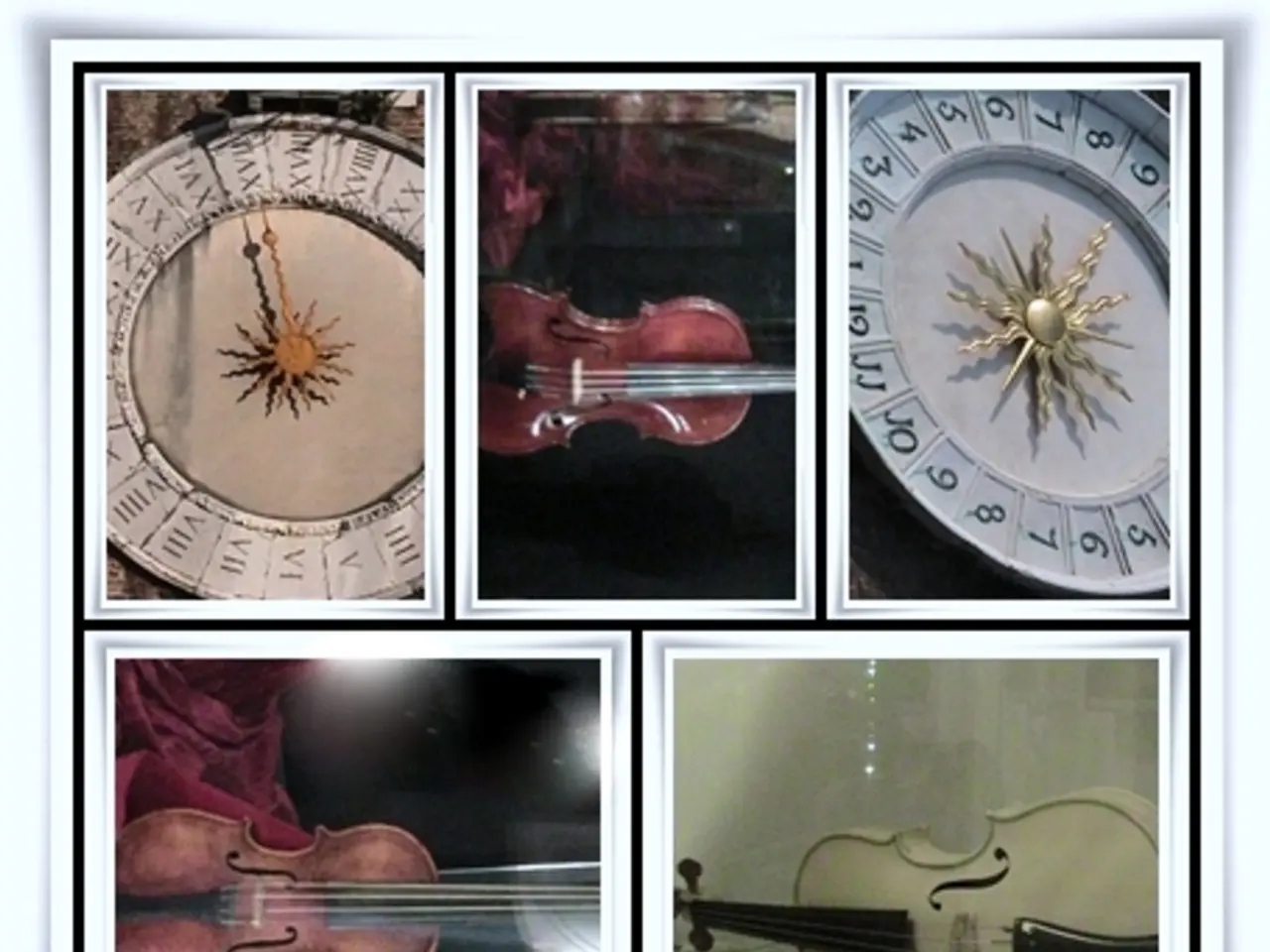Rhythmic Artistry: Understanding and Performing the Unusual Beat Patterns
=====================================================================
In the world of music, syncopation is a technique that adds a unique charm and groove to compositions, making them more danceable and engaging. This article will guide you through the process of creating syncopated rhythms in the familiar 4/4 time signature, a common metre in various genres like pop, jazz, funk, and Latin music.
To begin with, it's essential to understand that in 4/4 time, the strong (down) beats are typically beats 1 and 3, while beats 2 and 4 are weaker. Syncopation often accents the off-beats (the “ands” between beats) or weak beats to create an unexpected rhythmic tension.
Here are some key steps and tips to help you write syncopated rhythms:
- Shift accentuation using note values and ties: In 4/4, use eighth notes, ties, and rests to move the accentuation from strong beats to weak beats or off-beats. For instance, tie a note across a strong beat so its sound starts on a weak beat or off-beat, accenting unexpected places.
- Create rhythmic displacement with rests: Employ rests on strong beats combined with notes on weak beats or off-beats to create a sense of displacement.
- Add variety with sixteenth notes or triplets: Incorporate sixteenth notes or triplets to add more off-beat accents, which enhance syncopation.
- Practice counting and clapping: Practice counting aloud with emphasis on off-beats (e.g., "1 and 2 and 3 and 4 and") and clapping or playing notes on the “ands” or off-beats to internalize the syncopated rhythm.
For example, a rhythm where notes are played on the “and” of beat 2 and on beat 4, instead of strictly on beats 1, 2, 3, 4, creates a syncopated feel. Tying an eighth note across beat 2 to the “and” of 2 shifts the emphasis off the main beat, adding a touch of syncopation.
Syncopated rhythms add groove and complexity by highlighting unexpected beats within the stable 4/4 framework, making music perfectly imperfect, and uniquely danceable.
Remember, syncopation is an advanced form of music theory and may require practice to master. To improve your rhythm knowledge, consider joining a website that offers tutorials, samples, and collaboration tools. A comprehensive resource for learning syncopated rhythms is Ted Reed's "Progressive Steps to Syncopation for the Modern Drummer."
One legendary figure who has mastered syncopated rhythms is Tony Allen, the drummer known for pioneering the afrobeat drumming style, which heavily uses syncopated beats. Similarly, the song "Give Me Everything (Tonight)" by Pitbull features syncopated rhythms in its bass and synth parts, a common concept in pop music.
In conclusion, mastering syncopated rhythms in 4/4 time allows you to add a unique twist to your compositions, making them more engaging and danceable. Practice, patience, and a willingness to learn from various genres and resources will help you on your journey to becoming a syncopation master.
Technology plays a significant role in facilitating practice for mastering syncopated rhythms by providing access to tutorials, samples, and collaboration tools online. These digital resources allow musicians to learn and perfect their rhythm skills at their own pace and convenience. Additionally, studying the works of legendary musicians like Tony Allen, who has mastered syncopated rhythms in the afrobeat genre, can inspire creative uses of syncopation in modern, technologically-driven music production.




